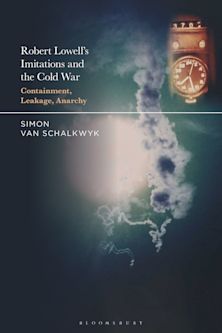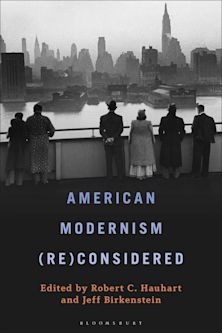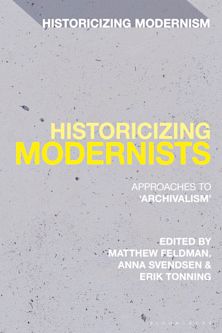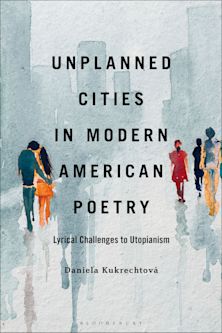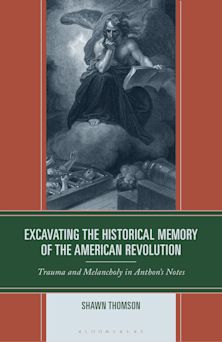- Home
- ACADEMIC
- Literary Studies
- North American and Caribbean Literature
- The Self-Reflexive Art of Don DeLillo
You must sign in to add this item to your wishlist. Please sign in or create an account
Description
Don DeLillo has spent his career reflecting upon the creative processes of artists. In recent years he has become increasingly drawn to spectators and how they project and indulge their own private obsessions through art. The Self-Reflexive Art of Don DeLillo is the first book devoted to this dimension of DeLillo's art.
It is also the first book to identify and analyze a signature DeLillo motif: the embedded author. In multiple novels, short stories, and plays, DeLillo inserts a character subtly implied as the creator of the very narrative we are reading or watching. Spanning his entire career but focusing primarily on his work from Underworld (1997) to Zero K (2016), The Self-Reflexive Art of Don DeLillo breaks important new ground in DeLillo studies.
Table of Contents
Acknowledgments
List of Abbreviations
1. How to Make Metafiction: A Genealogy for Don DeLillo's Self-Reflexive Art
2. American Narcissus: Lacanian Reflections in Americana
3. Libranth: Nicholas Branch's Joycean Labyrinth
4. “The Martiniad”: Nick Shay as Embedded Author in Underworld
5. The Artistic Gestation of Klara Sax
6. Performing Self-Dialogue in “The DeLillo Variations”
7. Art Stalkers
8. Literary Triangulation: DeLillo – O'Hara – Oates
9. A Miniature Star: Remains and Returns in the Metafiction of Zero K
10. A Portrait of the ARTIS: Jeff Lockhart as Embedded Author in Zero K
Coda
Bibliography
Index
Product details

| Published | 27 Jun 2019 |
|---|---|
| Format | Ebook (Epub & Mobi) |
| Edition | 1st |
| Extent | 288 |
| ISBN | 9781501345067 |
| Imprint | Bloomsbury Academic |
| Publisher | Bloomsbury Publishing |
About the contributors
Reviews
-
Herren (Xavier Univ.) analyzes a metafictional motif that permeates DeLillo's entire body of work-mirrors or mirrored realities. He argues that DeLillo and DeLillo's artist/narrator characters create fictional worlds and represent reality through their art. He also contends that spectators within DeLillo's works, as in reality, project their personal preoccupations onto art, thereby making art as self-reflexive for observers as it is for the artists who create it. Herren chooses to investigate self-reflexivity in what he deems the most relevant of DeLillo's texts: he dedicates two chapters apiece to Underworld and Zero K and in other chapters focuses on Americana, Libranth, and later works. In a creative turn at the book's end, Herren offers a coda in which he recounts a pertinent dream regarding DeLillo and his work. Extensive endnotes elaborate on points throughout the text. Summing Up: Recommended
CHOICE
-
The Self-Reflexive Art of Don DeLillo provides a framework and insights that are highly interesting, original, and readable, while at the same time being intensive, developed, and deep. DeLillo's work benefits from Graley Herren's effective combination of strong close reading as well as his varied, sophisticated theoretical lenses, which demonstrate the many ways in which DeLillo's fiction both reflects our, and creates its own, world.
Jesse Kavadlo, Professor of English and Humanities, Maryville University of St. Louis, USA, and author of Don DeLillo: Balance at the Edge of Belief (2003)
-
Graley Herren provides accessible, elegant proof of yet another set of themes and methods woven into DeLillo's astoundingly intricate art. Through close analysis of both well-known and underappreciated texts, Herren reveals how the multifaceted metaphor of mirrors has served DeLillo in fascinating, virtually innumerable ways, and that his self-reflexive depictions of artists and the creative process constitute a career-long argument for the salvific potential of art itself.
Tim Engles, Professor of English, Eastern Illinois University, USA, and author of White Male Nostalgia in Contemporary North American Literature (2018)
-
A welcome addition to the DeLillo shelf, it should rank with the indispensable studies of this author. Original, fresh, and at times startling, Herren's readings are enhanced by his scrupulous attention to prior DeLillo criticism. One sees considerable tracts of the now vast scholarly conversazione succinctly laid out, celebrated, and resourcefully augmented.
David Cowart, Modern Philology

ONLINE RESOURCES
Bloomsbury Collections
This book is available on Bloomsbury Collections where your library has access.














